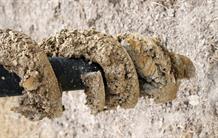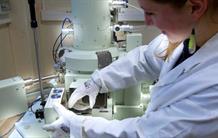Scientific result | Radioactive waste
The corrosion of steel in a clay environment
 Creative Commons
Creative Commons
Folder chapeau
A team from Iramis analyzed the long-term corrosion of steel in a clay environment, under conditions of geological storage for nuclear waste. They observed that an iron oxide layer of sub-micron thickness appears on the steel surface, stabilizing the kinetics of the deterioration. This result enhances the corrosion models of the CEA and the Andra!
Published on 27 November 2017
Body text
The conditioning of highly active and long-lived nuclear waste should include several barriers to isolate radionuclides from the environment, during the required storage time. One of these barriers is a steel outer container that will corrode extremely slowly over several thousand years.
While field experiments continue at the Andra in the Meuse/Haute-Marne, researchers from Iramis are modelling these long-term processes based on laboratory experiments and the study of analogous archaeological parts that have been corroding for centuries. In particular, they have analyzed the corrosion of a steel model in storage conditions at Saclay, by combining several complementary techniques. These techniques include transmission electron microscopy and field emission microscopy, as well as scanning transmission X-ray microscopy.
Steel is known to corrode by forming iron carbonates that are more or less porous. However, Iramis's analyses show a submicronic layer of iron oxides (magnetite and maghemite) located between the steel and these corrosion products. The thickness of this layer varies from a few tens of nanometers to a micrometer, depending on the compactness of the clay environment. According to the study, it is this distinct interface that controls the corrosion rate of the steel.

Crédit C. Dupont/CEA
Top page
Top page